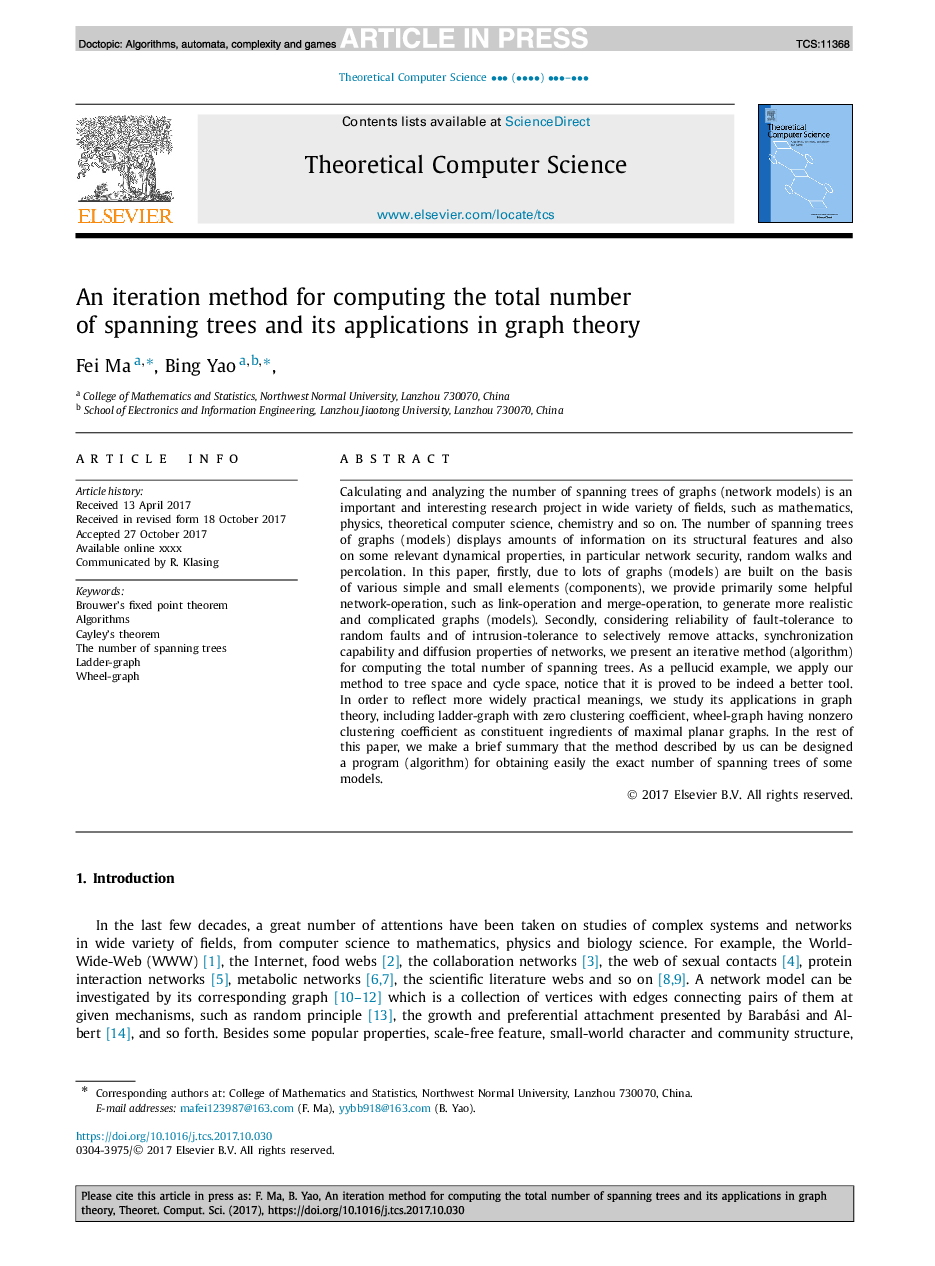| Article ID | Journal | Published Year | Pages | File Type |
|---|---|---|---|---|
| 6875705 | Theoretical Computer Science | 2018 | 12 Pages |
Abstract
Calculating and analyzing the number of spanning trees of graphs (network models) is an important and interesting research project in wide variety of fields, such as mathematics, physics, theoretical computer science, chemistry and so on. The number of spanning trees of graphs (models) displays amounts of information on its structural features and also on some relevant dynamical properties, in particular network security, random walks and percolation. In this paper, firstly, due to lots of graphs (models) are built on the basis of various simple and small elements (components), we provide primarily some helpful network-operation, such as link-operation and merge-operation, to generate more realistic and complicated graphs (models). Secondly, considering reliability of fault-tolerance to random faults and of intrusion-tolerance to selectively remove attacks, synchronization capability and diffusion properties of networks, we present an iterative method (algorithm) for computing the total number of spanning trees. As a pellucid example, we apply our method to tree space and cycle space, notice that it is proved to be indeed a better tool. In order to reflect more widely practical meanings, we study its applications in graph theory, including ladder-graph with zero clustering coefficient, wheel-graph having nonzero clustering coefficient as constituent ingredients of maximal planar graphs. In the rest of this paper, we make a brief summary that the method described by us can be designed a program (algorithm) for obtaining easily the exact number of spanning trees of some models.
Keywords
Related Topics
Physical Sciences and Engineering
Computer Science
Computational Theory and Mathematics
Authors
Fei Ma, Bing Yao,
